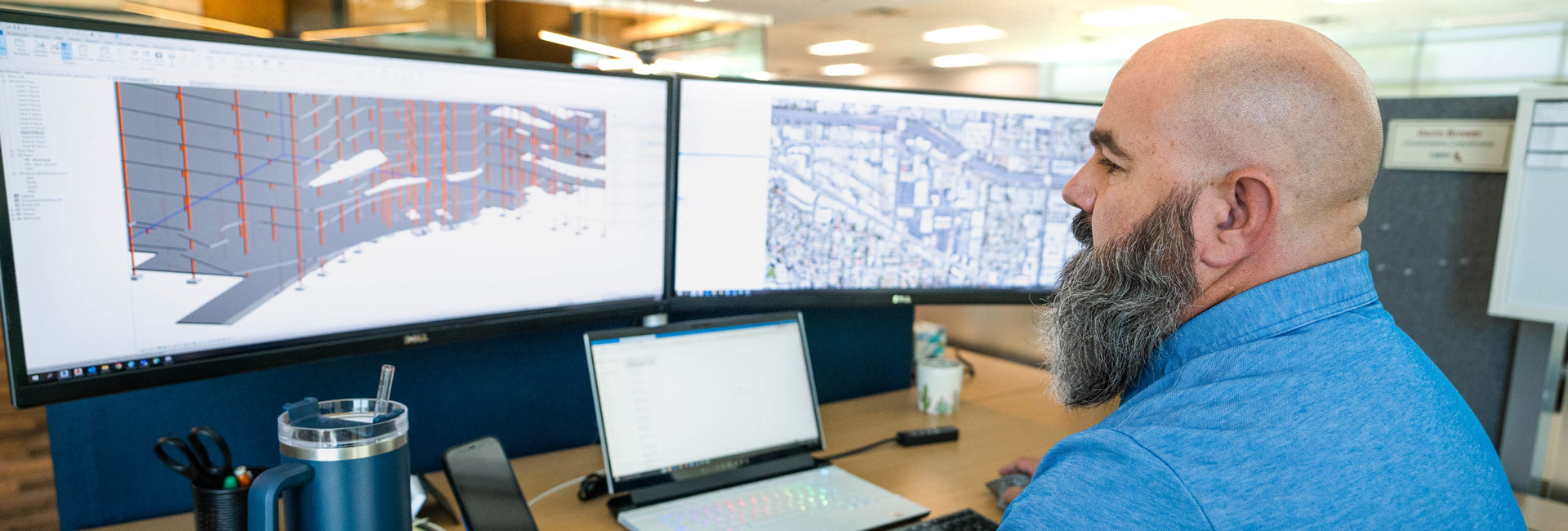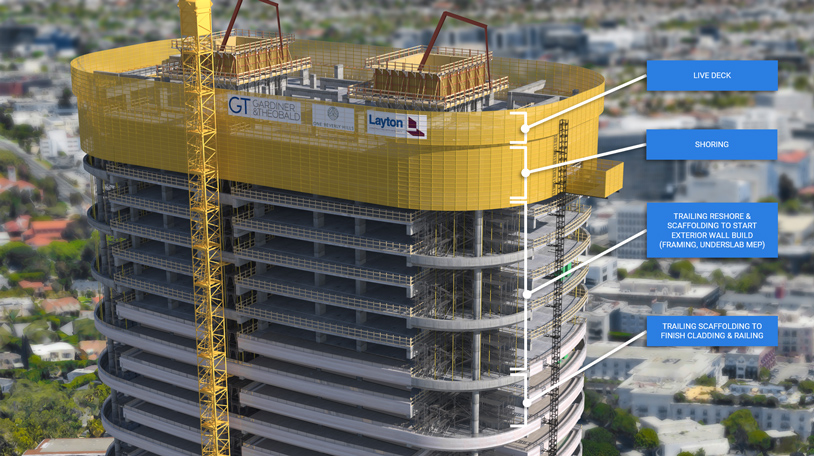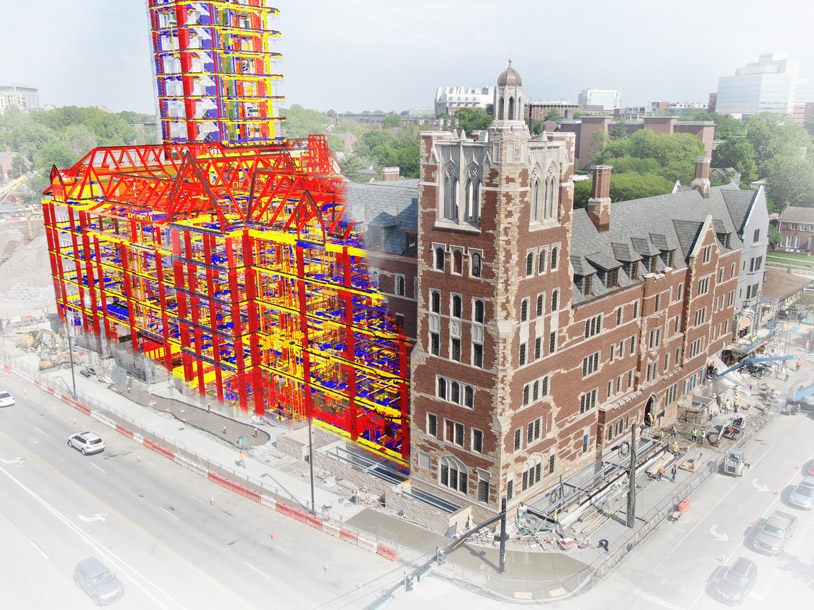Virtual design and construction (VDC) has been around now for decades. But the tools, software, uses, and skills change rapidly and vary widely across the industry. It can be hard to keep up with, especially for teams with only one or two VDC professionals onboard.

As STO Building Group grew and added experts to its network, a stronger VDC community started to emerge, and VDC practitioners and leaders across the organization began to understand the full depth of expertise and experience within their own ranks.
“As we got to know each other more, we started hearing about the different, exciting ways teams were using VDC across the organization,” says Roger Saleeby, senior vice president in STO Building Group’s Global Services team. “We knew our businesses and our clients could benefit from us tapping into that experience more to learn from each other and continue finding even smarter, more efficient approaches to our projects.”
CONNECTING THE DOTS
That’s when the STOBG VDC Center of Excellence & Innovation (CEI) took shape. As a leader of the company’s Global Services team, Saleeby had exposure to what different STOBG builders were doing with VDC tools and techniques, and he launched an effort to pull those leaders together in a more formal structure with measurable goals and widespread executive support. The team created a charter for itself, including a value statement, organizational chart, and short-term and long-term goals. STOBG leadership approved the idea, and the team got to work, hosting a live, in-person summit in 2021 to set some baseline goals and meeting in person each year since (plus monthly virtual meetings) to keep moving the exploration, innovation, and collaboration forward.
At the heart of the VDC Center of Excellence & Innovation are four action groups: Guidelines & Practices, Technology & Innovation, Marketing & Communications, and Field Operations—all tasked with the goal of sharing information and helping support the company’s key VDC skills and deliverables.
“We have incredible talent within our organization, but it felt overwhelming to try to figure out how to connect all of those dots,” says Jon Ferguson, vice president of visualization services at Layton Construction and chair of the VDC Center of Excellence. “Establishing the CEI, our committees, and goals for how to make those connections has really helped us move the ball forward.”
COLLABORATION AT WORK
While the needs and skills vary between each STOBG business and the types of buildings they build—visualization and logistics, for example, play a much bigger role in a large, ground-up project while MEP coordination and reality capture may be more the focus of a shorter interior job—VDC specialists from across the organization have been sharing information and even directly supporting each other’s projects to help solve challenges.
For example, Brian Dover, VDC design coordinator at RC Andersen, was inspired by Layton’s visualization team to improve his own capabilities
in the visualization process.
“I’ve collaborated with the Layton team to find better ways to produce the high-quality images that are required for proposals, and I’m proud to say that so far, this has led to multiple project wins for RCA,” he says. “The quality of the product has exponentially grown, which would not have happened without this STOBG collaboration.”
In another example, the Structure Tone London team has made reality capture a standard practice, thanks to learning about it through the VDC Center of Excellence & Innovation.
“Through our discussions in the CEI, I heard about how Structure Tone Southwest and others were using tools like OpenSpace to capture project progress, validate subcontractor deliverables, confirm material quantities, and more,” says Chris Bailey, creative design manager for Structure Tone London. “I thought, ‘We have to try this on our projects.’ And today, we’re using it regularly and both our project teams and our clients love how it’s streamlined our work.”


COLLABORATION FOR THE WIN
Each of the businesses in the STO Building Group family of builders has VDC capabilities, and the goal has always been to use those skills to deliver the best possible outcomes for clients. And now with the companywide VDC Center of Excellence & Innovation, a built-in mechanism for leveraging an even deeper well of know-how is making that goal even easier to attain.
“We long-ago embraced BIM and virtual construction technologies on our projects,” says Walt Cichonski, director of engineering at LF Driscoll. “But as this community of experts has grown across STOBG, we’re finding the collaboration and knowledge sharing has taken what we can do to another level. It’s a game changer.”
